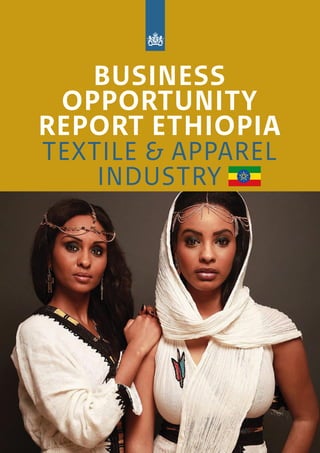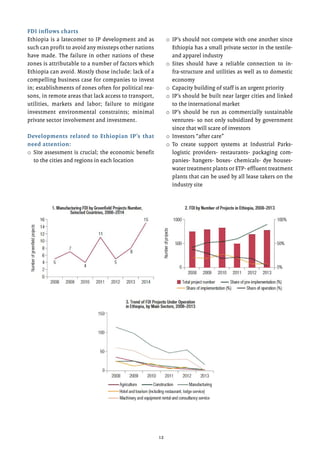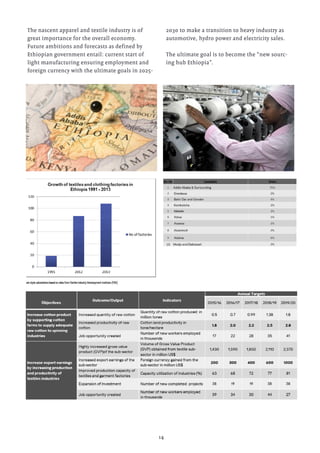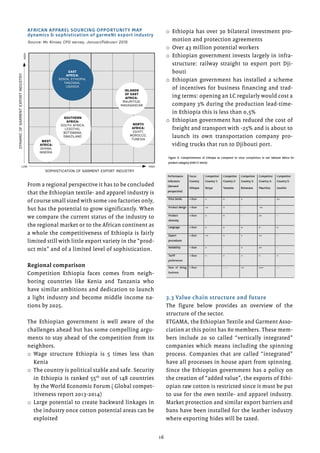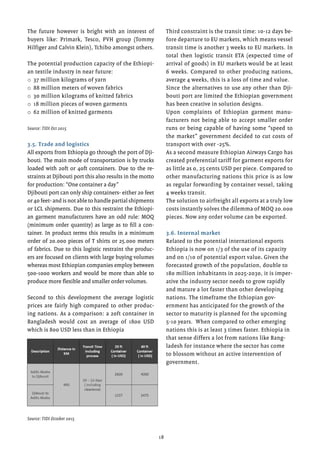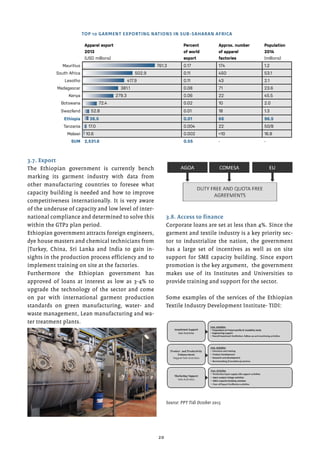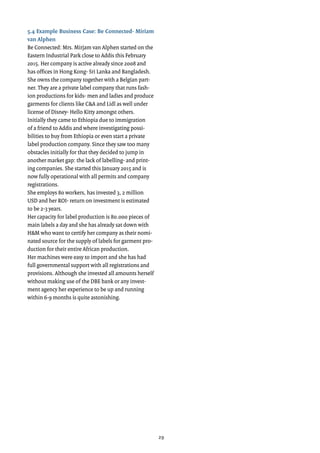The document provides an overview of business opportunities in Ethiopia's textile and apparel industry. It summarizes Ethiopia's strong economic growth over recent years and its goal of diversifying exports away from agriculture. The textile and apparel sector has grown significantly but has yet to meet government targets, facing challenges like inconsistent cotton production and low factory utilization rates. The Ethiopian government strongly supports the industry and has pursued policies to attract foreign investment, seeing textiles as key for employment. Overall the industry shows great potential due to low costs and an abundant young workforce, though continued reforms will be needed to fully capitalize on opportunities.
